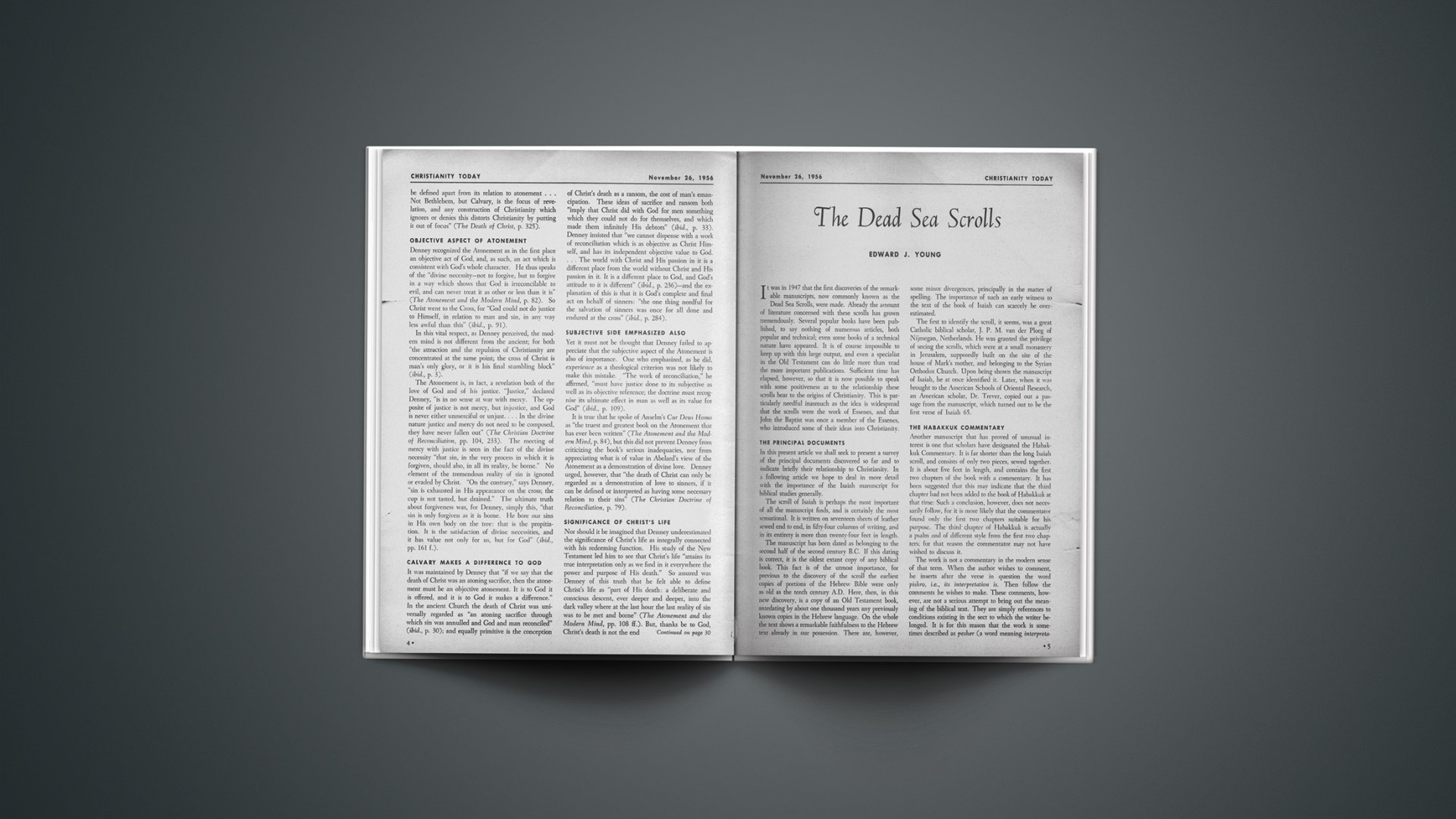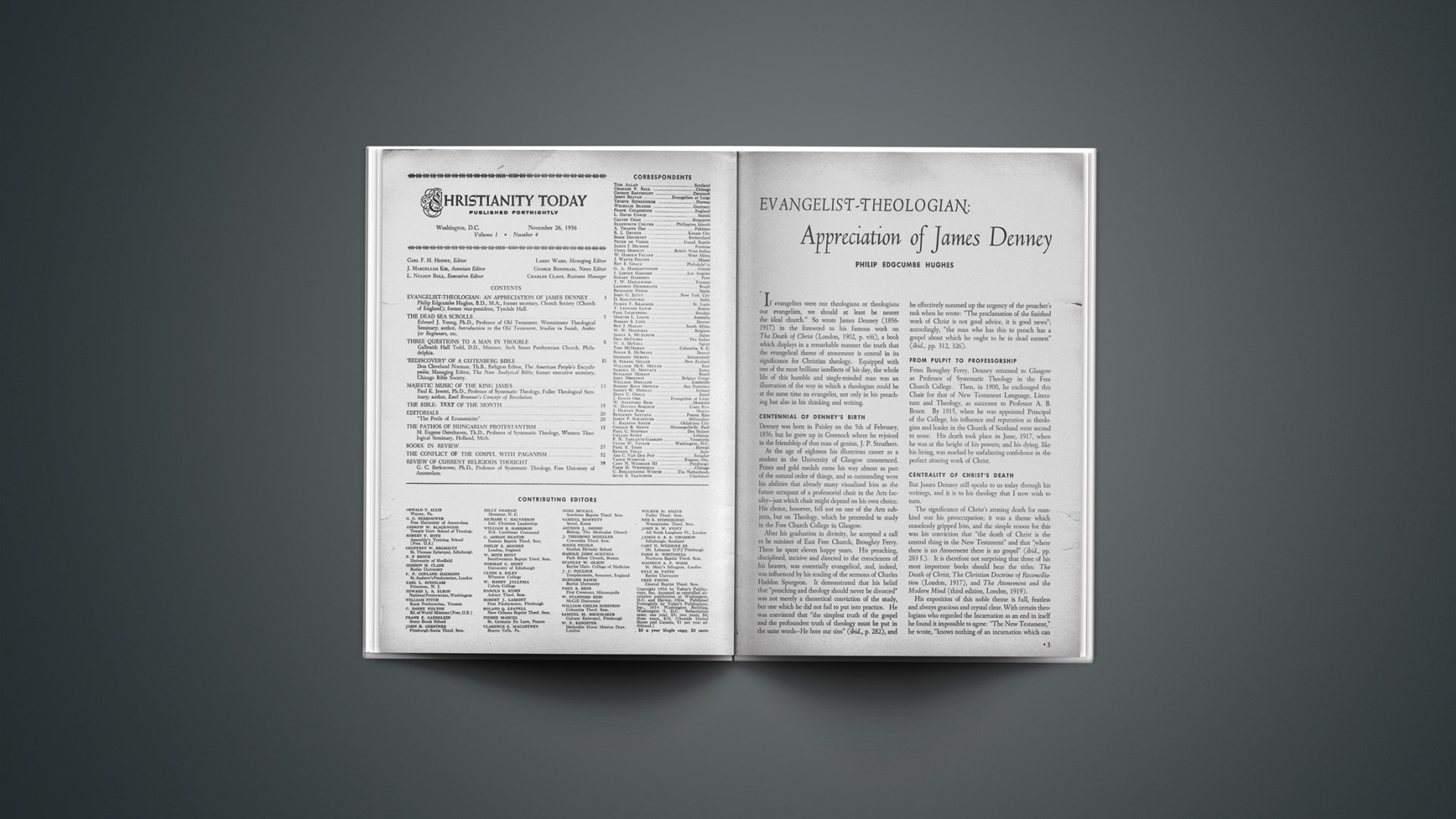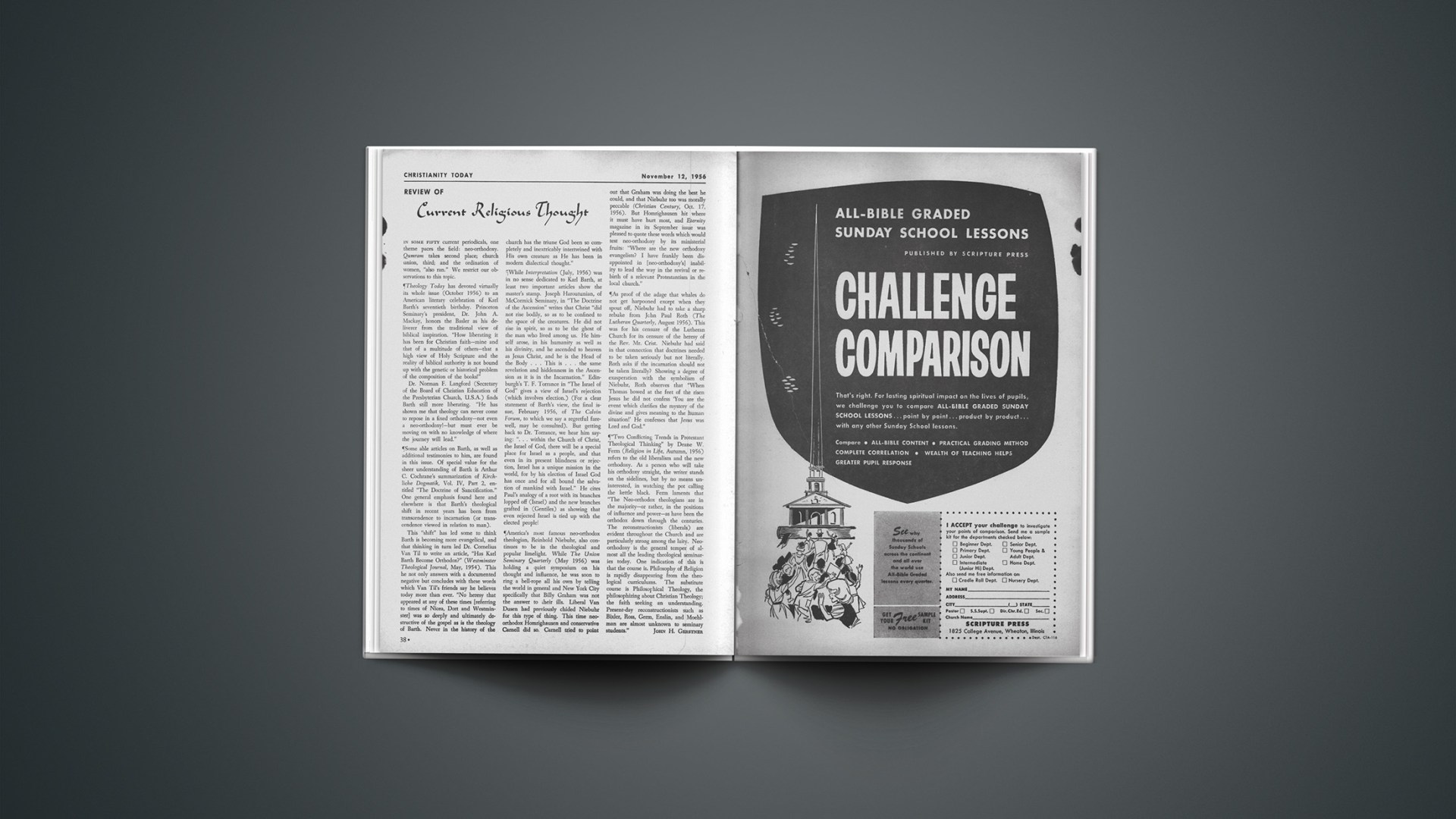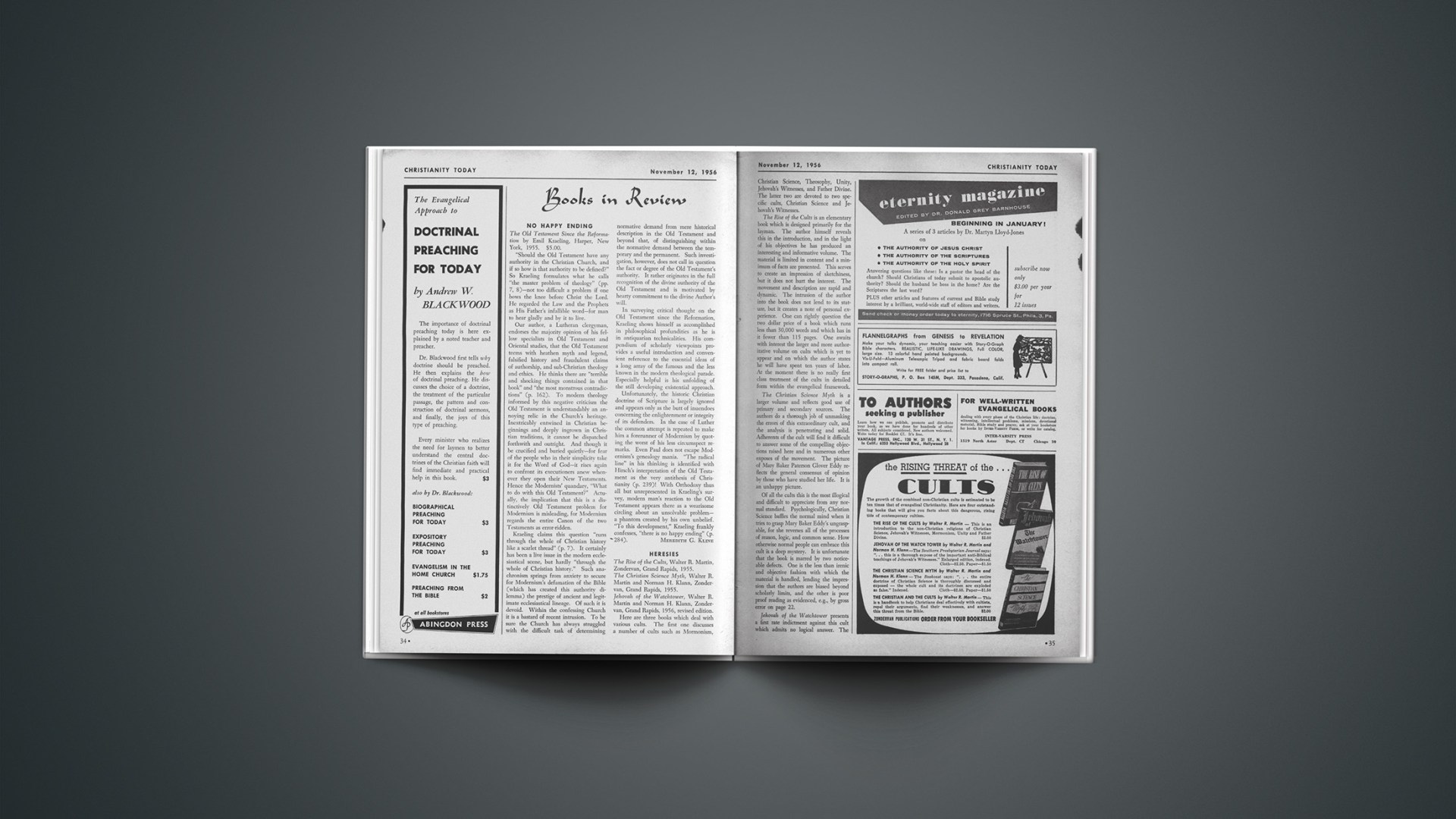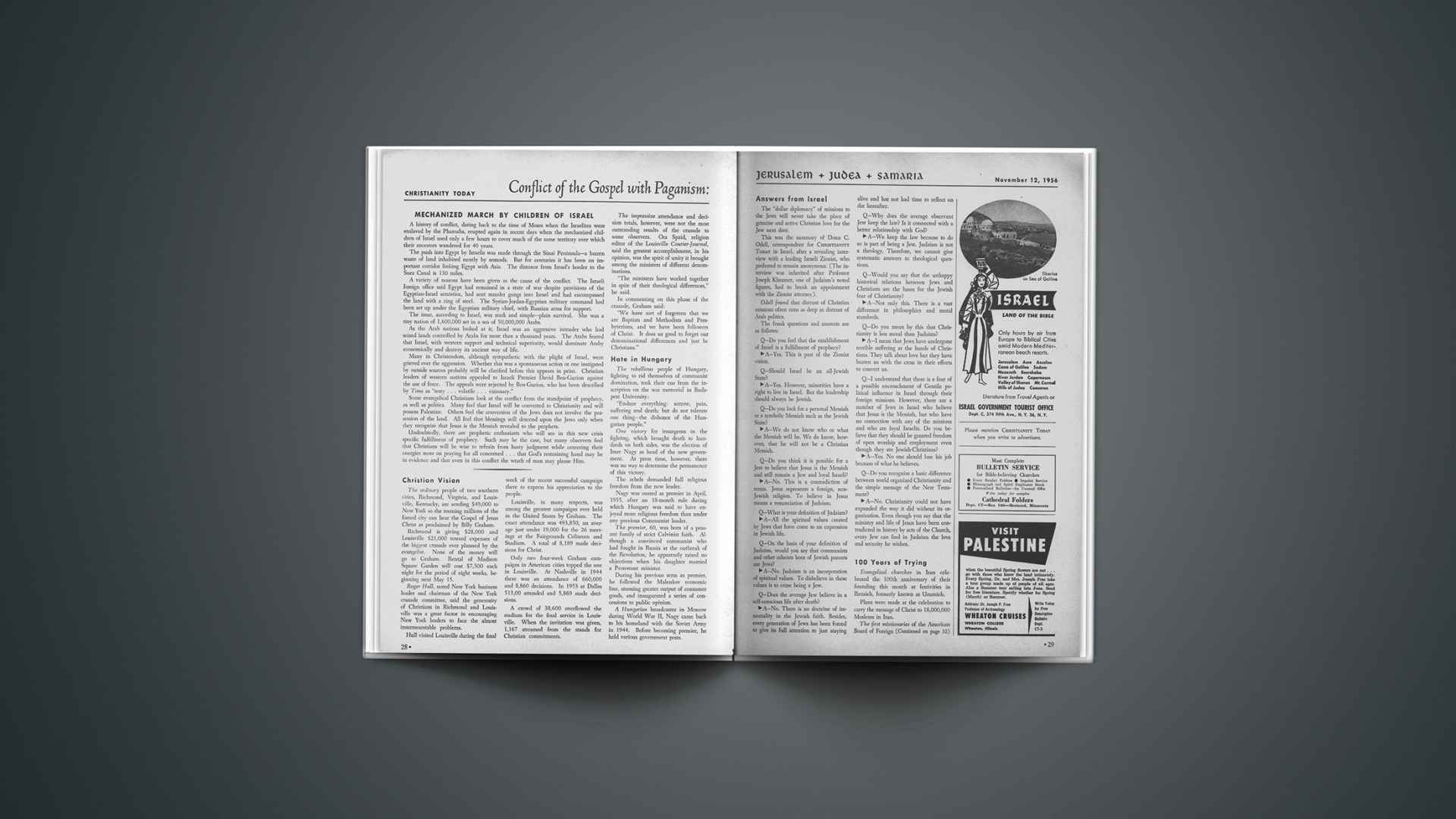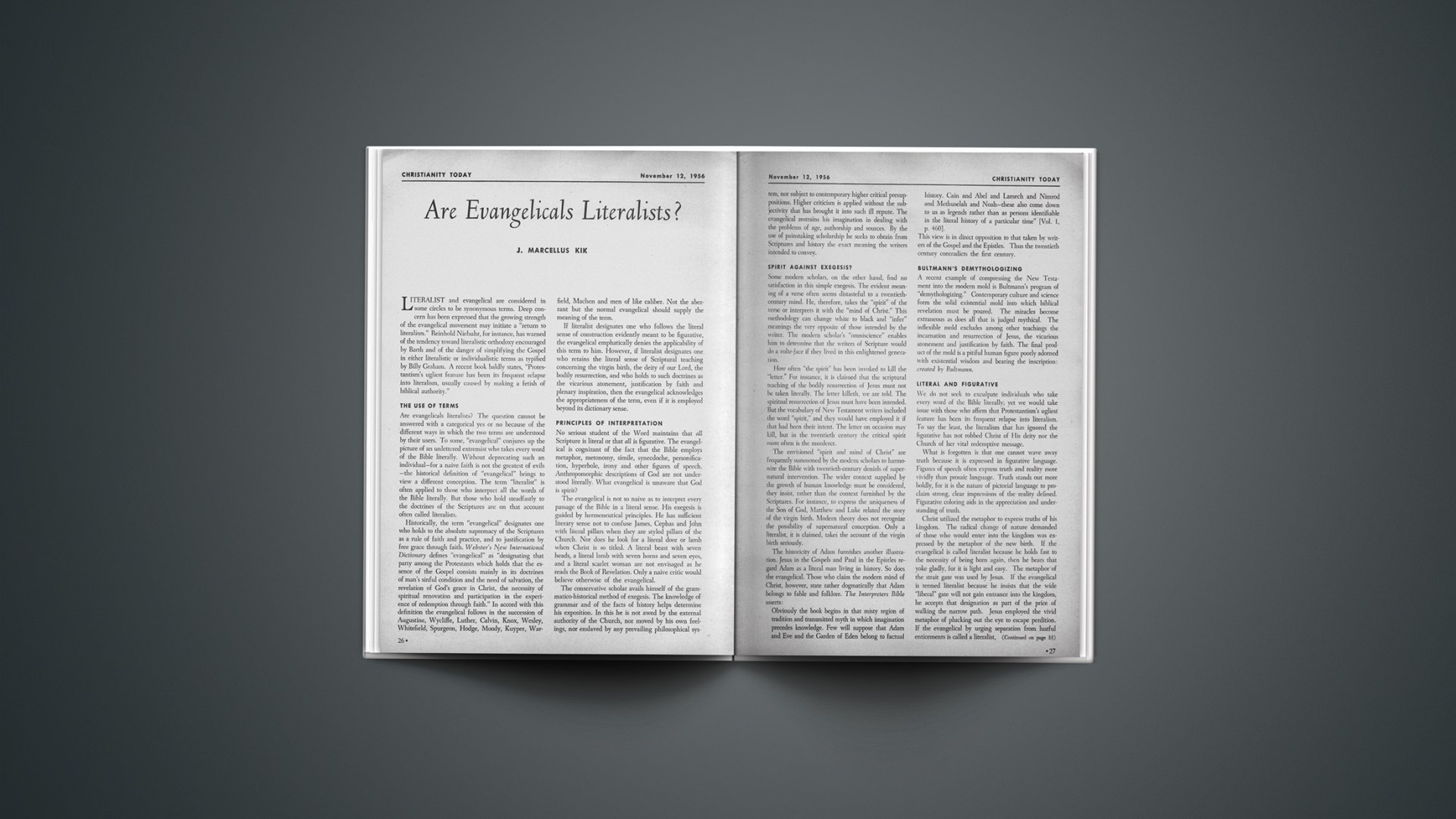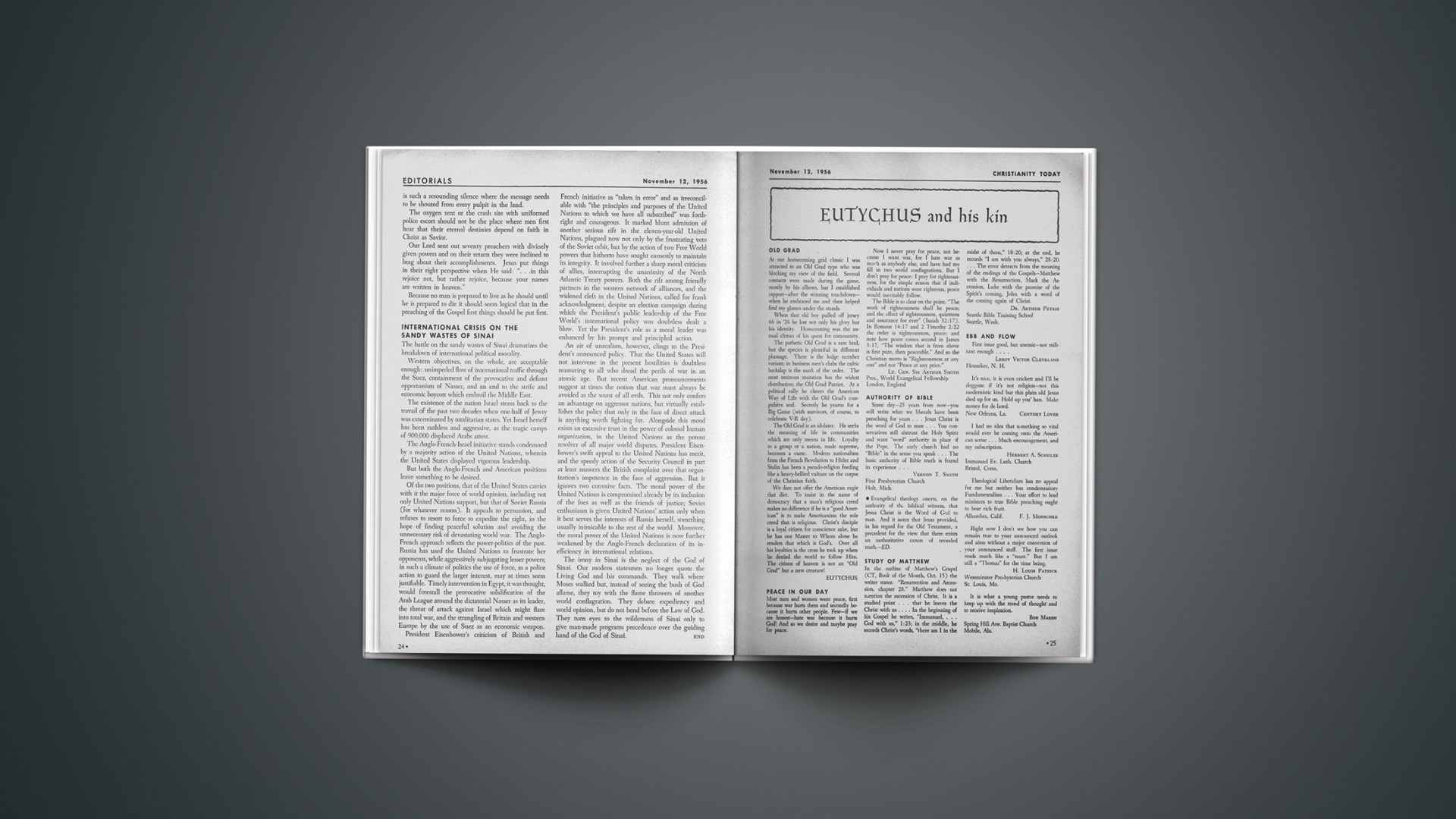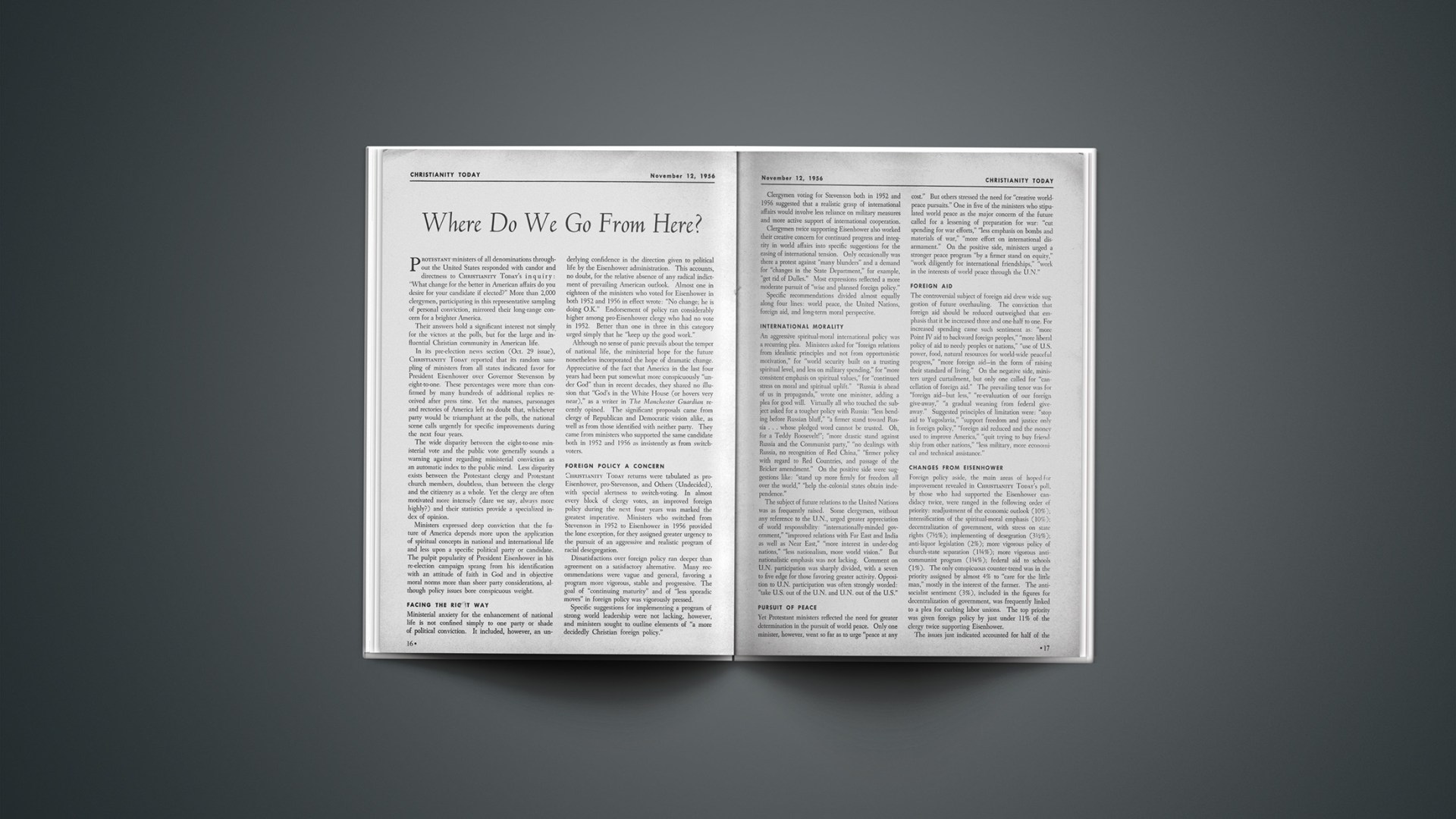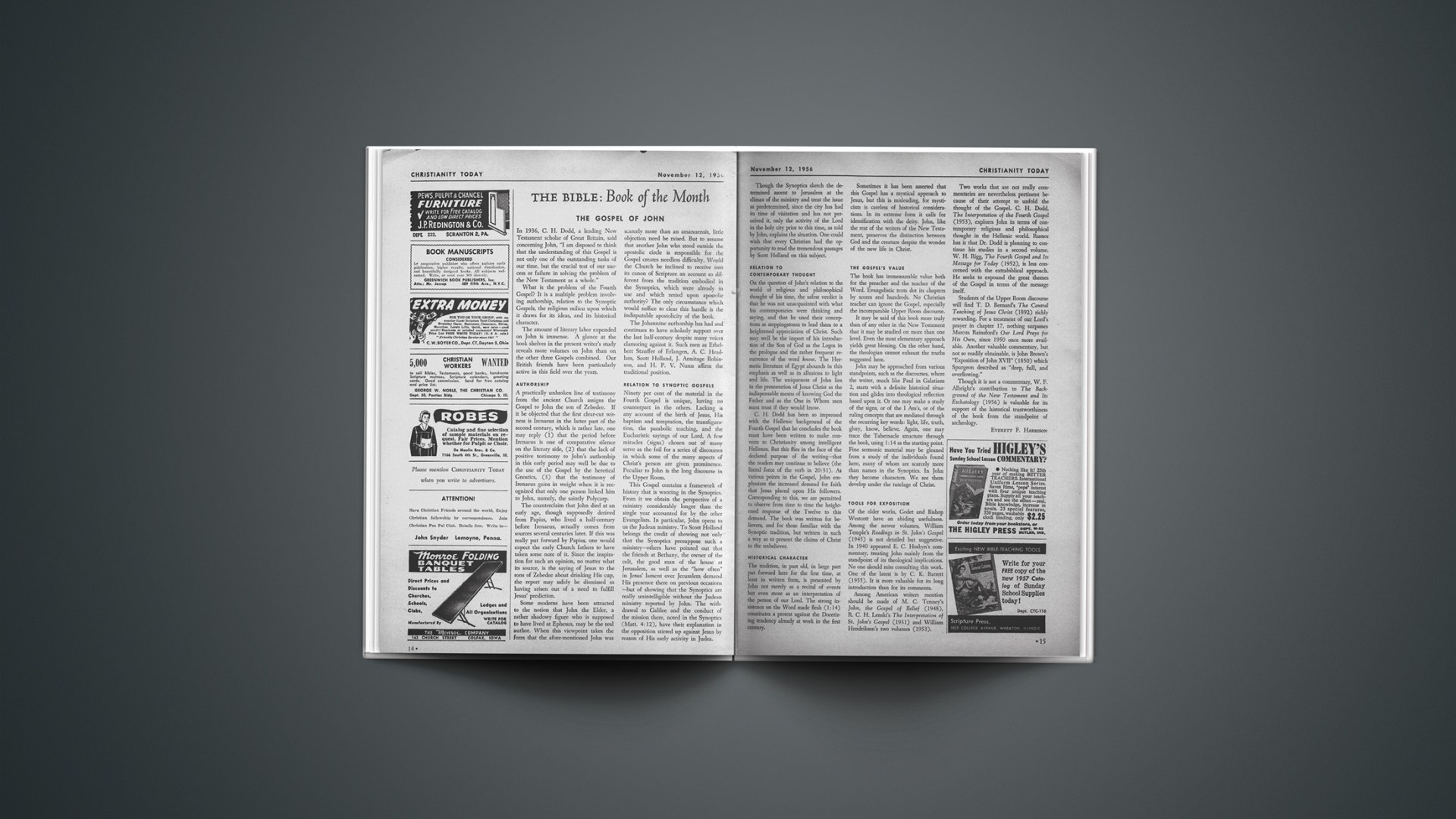It was in 1947 that the first discoveries of the remarkable manuscripts, now commonly known as the Dead Sea Scrolls, were made. Already the amount of literature concerned with these scrolls has grown tremendously. Several popular books have been published, to say nothing of numerous articles, both popular and technical; even some books of a technical nature have appeared. It is of course impossible to keep up with this large output, and even a specialist in the Old Testament can do little more than read the more important publications. Sufficient time has elapsed, however, so that it is now possible to speak with some positiveness as to the relationship these scrolls bear to the origins of Christianity. This is particularly needful inasmuch as the idea is widespread that the scrolls were the work of Essenes, and that John the Baptist was once a member of the Essenes, who introduced some of their ideas into Christianity.
The Principal Documents
In this present article we shall seek to present a survey of the principal documents discovered so far and to indicate briefly their relationship to Christianity. In a following article we hope to deal in more detail with the importance of the Isaiah manuscript for biblical studies generally.
The scroll of Isaiah is perhaps the most important of all the manuscript finds, and is certainly the most sensational. It is written on seventeen sheets of leather sewed end to end, in fifty-four columns of writing, and in its entirety is more than twenty-four feet in length.
The manuscript has been dated as belonging to the second half of the second century B.C. If this dating is correct, it is the oldest extant copy of any biblical book. This fact is of the utmost importance, for previous to the discovery of the scroll the earliest copies of portions of the Hebrew Bible were only as old as the tenth century A.D. Here, then, in this new discovery, is a copy of an Old Testament book, antedating by about one thousand years any previously known copies in the Hebrew language. On the whole the text shows a remarkable faithfulness to the Hebrew text already in our possession. There are, however, some minor divergences, principally in the matter of spelling. The importance of such an early witness to the text of the book of Isaiah can scarcely be over-estimated.
The first to identify the scroll, it seems, was a great Catholic biblical scholar, J. P. M. van der Ploeg of Nijmegan, Netherlands. He was granted the privilege of seeing the scrolls, which were at a small monastery in Jerusalem, supposedly built on the site of the house of Mark’s mother, and belonging to the Syrian Orthodox Church. Upon being shown the manuscript of Isaiah, he at once identified it. Later, when it was brought to the American Schools of Oriental Research, an American scholar, Dr. Trever, copied out a passage from the manuscript, which turned out to be the first verse of Isaiah 65.
The Habakkuk Commentary
Another manuscript that has proved of unusual interest is one that scholars have designated the Habakkuk Commentary. It is far shorter than the long Isaiah scroll, and consists of only two pieces, sewed together. It is about five feet in length, and contains the first two chapters of the book with a commentary. It has been suggested that this may indicate that the third chapter had not been added to the book of Habakkuk at that time. Such a conclusion, however, does not necessarily follow, for it is more likely that the commentator found only the first two chapters suitable for his purpose. The third chapter of Habakkuk is actually a psalm and of different style from the first two chapters; for that reason the commentator may not have wished to discuss it.
The work is not a commentary in the modern sense of that term. When the author wishes to comment, he inserts after the verse in question the word pishro, i.e., its interpretation is. Then follow the comments he wishes to make. These comments, however, are not a serious attempt to bring out the meaning of the biblical text. They are simply references to conditions existing in the sect to which the writer belonged. It is for this reason that the work is sometimes described as pesher (a word meaning interpretation.It is a form of this word, pishro, with which the comments are introduced.). Thus, to take an example, the comment on Habakkuk 1:4 may be translated, “its interpretation is, the wicked one, he is the Wicked Priest, and the righteous one, he is the Teacher of Righteousness.” The first part of the comment is lost, although doubtless it began with words that could be translated as we have just done. The Teacher of Righteousness who is introduced in this comment was evidently a member, possibly the leader, of the group to which the writer belonged.
Similarities Are Formal
Without a doubt the Habakkuk Commentary is one of the more important of the Dead Sea finds. Already much study has been devoted to it. At least one large technical volume has been written about it. And it is this “commentary” which, according to many, is supposed to furnish much of the evidence for the view that the teachings of Christianity are to be derived from the group that produced it.
Does the Habakkuk Commentary, however, really support the view that the ideas of Christianity are in some measure to be derived from the group that lived at Qumran near the Dead Sea? The answer to this question can of course be determined only by a careful study both of the New Testament and of the Habakkuk Commentary. Such a study shows that whatever similarities there are between the two are of a merely formal nature. To take but one example, the Habakkuk Commentary in its remarks upon Habakkuk 2:4 speaks of “all who do the law in the house of Judah whom God will deliver from the house of judgment [the court?] on account of their toil and their faith in the Teacher of Righteousness.” At first blush this seems to be very close to the Pauline doctrine of justification by faith alone. In all probability, however, the commentator simply used the word “faith” because it was found in the text of Habakkuk.
Misunderstanding Of Faith
That the commentator did not have a proper understanding of the meaning of the word “faith” is shown by the fact that he links it with the word “toil.” According to the New Testament (in fact, according to the Old Testament also), a man is saved by faith without the works of the law. If salvation is of faith, it cannot be by works, for faith excludes works. Likewise, if salvation is by works, faith is excluded. It can be one or the other, but not both. The Bible makes it clear that salvation is by faith alone. Very different, however, is this Habakkuk Commentary. The commentator teaches that deliverance from the house of judgment will come on account of both works and faith. This is the very opposite of what the Bible teaches.
The Manual Of Discipline
This work consists of five sheets of parchment, forming a scroll of a little over six feet in length, sewn together and comprising eleven columns. It appears to be a manual of instruction for those who wish to be members of the community. According to this document there was to be a kind of communal life. “They shall eat together, bless together and take counsel together” (v. 3). In early Christianity, however, this practice was not compulsory but voluntary (cf. Acts 4:32 ff.). The members of the community were to devote themselves to the study of the Law. They are described as those who “turn away from all evil and hold fast to all that He [i.e., God] has commanded in accord with His good pleasure;—to become a group in the Torah [Law] …” (v. 1, 2).
Did the practices of this group bear any relationship to those of Christianity? What, for example, shall we say about baptism? It is true that the sect whose customs are reflected in the Manual of Discipline engaged in certain lustrations and bathing, which seems to have been for a purificatory purpose. What its nature was, however, is difficult to determine, nor is the manner in which these washings were performed known as clearly as one could wish. It seems perfectly safe to say that they were not similar in purpose to baptism as taught in the New Testament.
The same is true of the communal meal of which the community partook. It must, of course, be noted that the practice of such a communal meal is also to be found elsewhere in the Jewish world, and was not restricted to the group that lived near the Dead Sea. The Lord’s Supper, however, was instituted by the Lord himself for the purpose of showing forth His death till He come (1 Cor. 10:20). Insofar as we may speak of historical roots of the Lord’s supper, they go back to the Old Testament, not to the customs or practices of Qumran.
At this point it is well to note that the community that lived at Qumran was a Jewish one. Whether it is to be identified with the Essenes is an open question. Such identity can neither be proved nor disproved. Inasmuch as the group was Jewish, in the nature of the case it is to be expected that its practices would largely reflect the teachings of the Old Testament, and this is just what we find. The roots of many of the practices of the group go back to the Old Testament, and for this reason we find a superficial resemblance between them and certain teachings of the New Testament. It would be a grave error, however, to assume that the practices of the group actually constituted the source from which the New Testament teachings were derived.
Other Manuscripts
In a short article of this kind it is impossible to do justice to all the manuscript finds. We may simply note one manuscript that is now generally designated “The War between the Children of Light and the Children of Darkness.” It contains nineteen columns of writing, and describes a holy war between the descendants of Levi, Judah, and Benjamin (the Children of Light) and the men of Edom, Moab, Ammon, Philistia, and the Kittim of Asshur (the Children of Darkness). There has been much discussion as to the historical references and the background of the document and its contents. Probably it describes the struggles of the Jews with their adversaries down to the Roman period.
Of unusual interest is the scroll containing what are designated the “Thanksgiving Hymns.” These are praises to God, much in the style of the biblical Psalms. They reflect a period later than that of the Old Testament and evidently represent the community at worship. They are largely filled with biblical phrases and thoughts. A comparison with the divinely revealed Psalms of the Bible, however, very decidedly shows them to be far superior to the Thanksgiving Hvmns.
Mention must also be made of three small fragments of Daniel which come from two different scrolls. Two fragments contain parts of the third chapter of Daniel, while the other has the section in chapter two where the language of Daniel changes from Hebrew to Aramaic. On the basis of paleological grounds (i.e., the nature of the script) these fragments have been dated in the late second century B.C., less than a century after the date “critics” give for the origin of the book itself. (Those who do not accept the witness of the Bible to itself usually date the final edition of Daniel at about 165 B.C.). This is most striking, for it apparently shows that two copies of the book were in circulation very shortly after the alleged time of its composition. It begins to look as though this consideration will make more difficult the maintaining of a late date for the authorship of the prophecy of Daniel.
A word must be said about the two copper scrolls discovered in one of the caves. They have finally been examined, and a first report claims that they contain directions for the location of buried treasure. To the best of the present writer’s knowledge, no technical report upon them has yet been made available, so that it is too early to say anything about their significance.
A word may be said by way of summary. Over four hundred fragments of biblical manuscripts have now been found. In fact, there are parts of every book of the Old Testament, with the possible exception of the book of Esther. Not all of this material has yet been made available for study, and it will doubtless be some time before it is ready. Great credit, however, is certainly due those scholars who have made manuscripts available. Is it too early to say anything definite about the effect which these discoveries will have upon biblical scholarship? For our part, we think not. Even now it is becoming apparent that many of the positions that have been held by those who do not accept the infallibility of Scripture must be abandoned. On the other hand, as a result of these discoveries, not one position that the conservatives have held has had to be abandoned or even modified. Not one teaching of the Scriptures has had to go by the board. This is indeed heartening, but it is what we might expect, for the Scriptures were not given by the wisdom of man but are the revealed oracles of the one living and true God.
END
Preacher In The Red
LONG TIME BETWEEN CALLS
A few months ago I paid a hospital call on a young woman of our church who had given birth to a child.
Recognizing that the patient’s room was in the same end of the hospital, and in about the same location, as one recently occupied by another of our parishioners, I ventured to say, “You know, I think this is the very same room that Mrs. A was in after her operation.”
Graciously refraining from laughter, the patient was quick to respond, “Well, if Mrs. A was ever in this room, it was long ago.” Immediately I realized that I was in the maternity ward, and that Mrs. A had borne her last child twenty-five years before.—WILLIS C. ROEBUCK, JR., Pastor, Braes Baptist Chapel, Houston, Texas.
For each report by a minister of the Gospel of an embarrassing moment in his life, CHRISTIANITY TODAY will pay $5 (upon publication). To be acceptable, anecdotes must narrate factually a personal experience, and must be previously unpublished. Contributions should not exceed 250 words, should be typed double-spaced, and bear the writer’s name and address. Upon acceptance, such contributions become the property of CHRISTIANITY TODAY. Address letters to: Preacher in the Red, CHRISTIANITY TODAY, Suite 1014 Washington Building, Washington, D.C.

